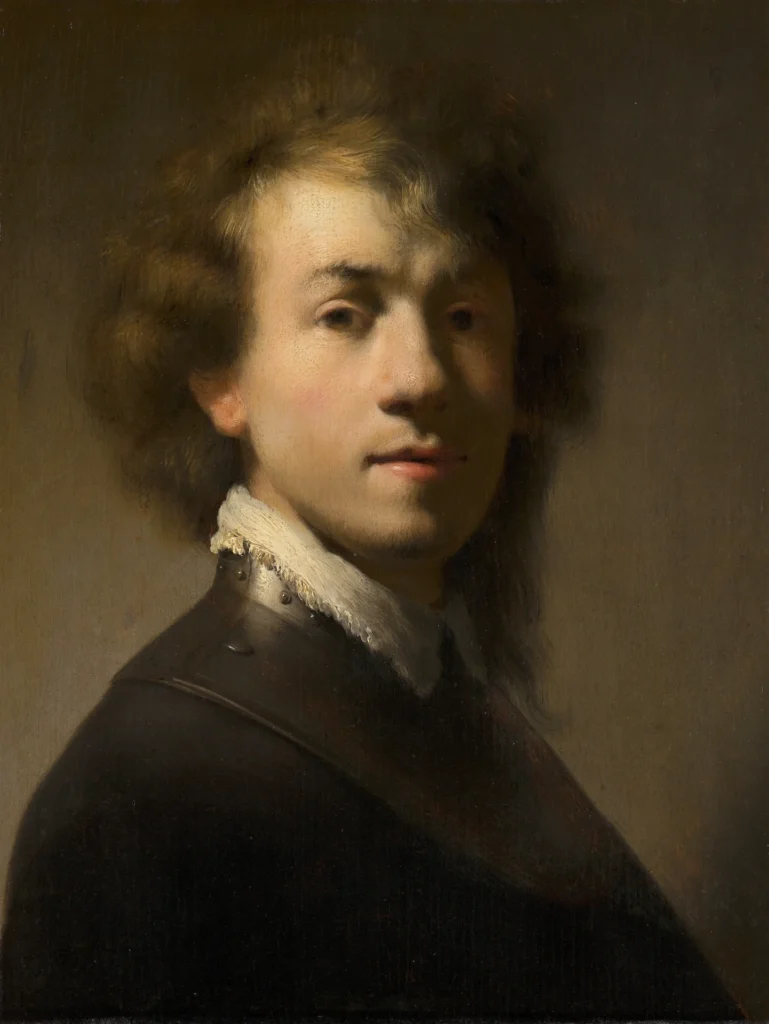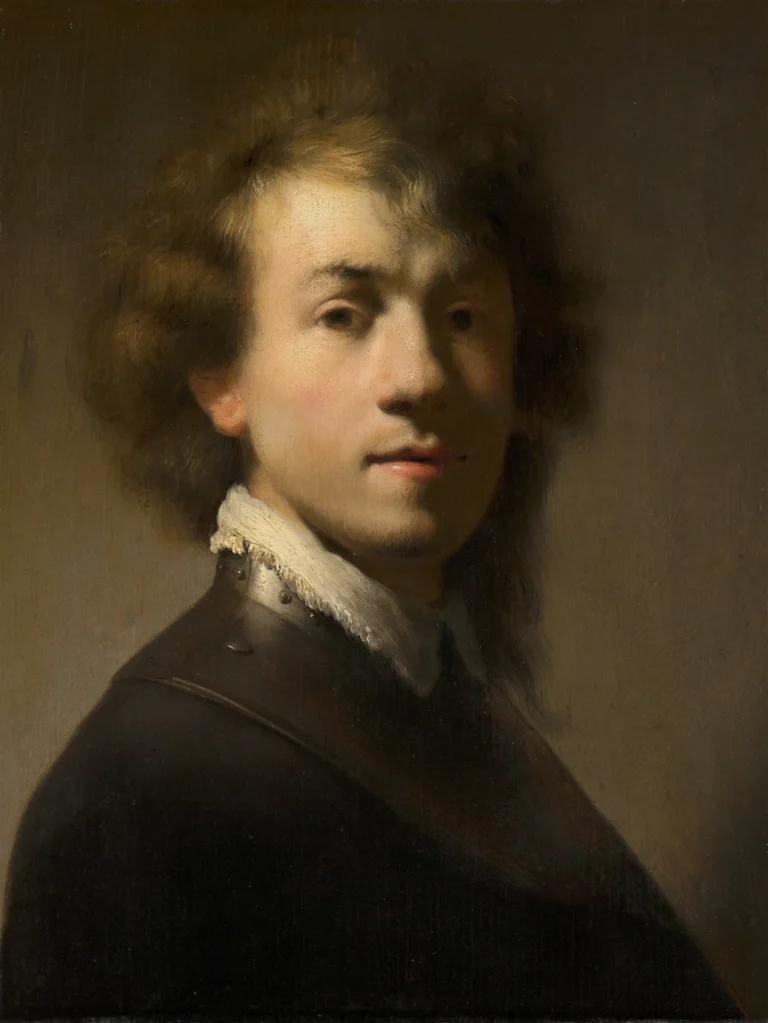Self-Portrait with Gorget
Created around 1629, Rembrandt's 'Self-Portrait with Gorget' reveals the young artist's ambition as he presents himself in aristocratic attire, complete with a gorget. Measuring 38.2 cm by 31 cm, this oil painting highlights Rembrandt's early experiments with light and shadow. Depicting fashion elements of the time, it encapsulates his talent for dramatic self-presentation and foreshadows his future mastery in portraiture.
Year 1629
About the Artwork
This self-portrait by Rembrandt was painted when he was just 23 years old, during his formative years in Leiden. It is an exploration of identity and ambition, as Rembrandt adeptly navigates the styles of the aristocracy, donning a gorget that signifies nobility even though he did not belong to that class. The painting reflects not only his artistic skills but also a desire to project himself as a prominent figure in society. The piece has been the subject of much research regarding its authenticity and has uncovered the technique and style that made Rembrandt a master, showcasing his keen understanding of light and shadow, which later defined his oeuvre.
Did You Know
The gorget that Rembrandt wears in the portrait served as a protective neckpiece in military armor, symbolizing nobility and valor, which aligns with his portrayal of himself as a man of distinction despite his more humble origins.
Throughout his life, Rembrandt created over 90 self-portraits, making him one of the most prolific artists in this genre. His self-portraits reflect his evolving identity, moods, and techniques as he matured as an artist.
Rembrandt’s ability to manipulate light and shadow, known as chiaroscuro, is evident in this early work. This technique would become a hallmark of his later style, contributing to the dramatic and emotional depth of his paintings.










